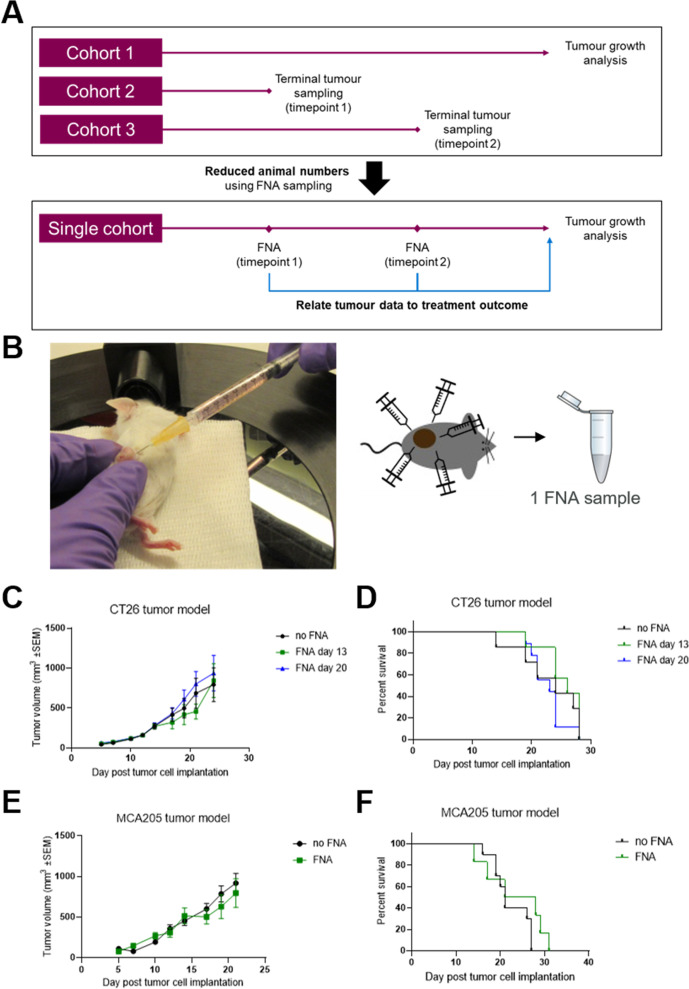Figure 1.
Tumor biopsy using fine needle aspiration (FNA) does not impact tumor growth or welfare. (A) Non-terminal tumor sampling using FNA can both reduce required animal numbers and enable direct correlation of tumor data with treatment outcome by using a single cohort of mice for both tumor biopsying and growth analysis. (B) Subcutaneous flank tumor-bearing mice are anesthetized and the tumor is biopsied at five sites with a 25-gauge needle, collecting the aspirate into cold media and pooling the five aspirates into a single Eppendorf tube. (C and D) Mice were subcutaneously implanted with CT26 tumors on the flank and the tumors were biopsied using FNA either 13 or 20 days later. Tumor growth over time (C) was compared between groups using a mixed effects model and time to endpoint (D) was compared between groups using a log-rank test. No significant differences were seen between FNA-biopsied and control groups. Error bars indicate the mean±SEM. Fourteen mice per group. The results represent one of two independent experiments. (E and F) Mice were subcutaneously implanted with MCA205 tumors on the flank and the tumors were biopsied using FNA 18 days later. Tumor growth over time (E) was compared between groups using a mixed effects model and time to endpoint (F) was compared between groups using a log-rank test. No significant differences were seen between FNA-biopsied and control groups. Error bars indicate the mean±SEM. Eight to 10 mice per group. The results include data from two independent experiments.

